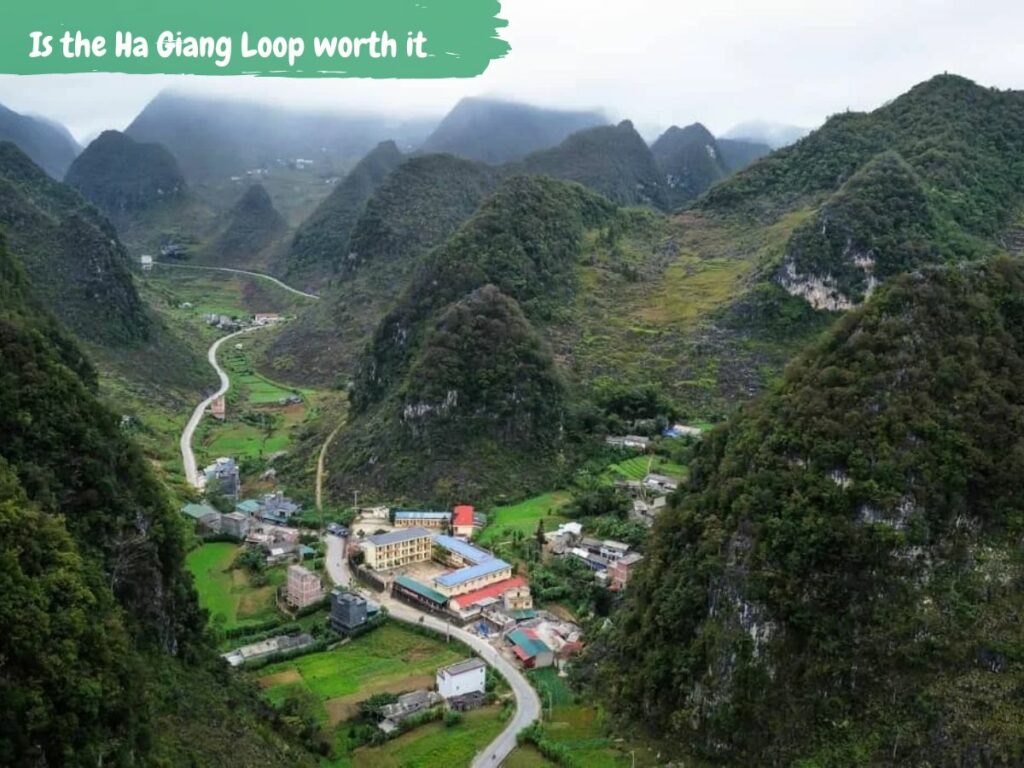Ha Giang Loop, Travel Guide
Is the Ha Giang Loop Worth It? What You Need to Know
If you love adventure and stunning scenery, you might be wondering if the Ha Giang Loop in Vietnam is worth your time and effort. The Ha Giang Loop is a famous motorbike route in northern Vietnam known for its breathtaking landscapes, winding mountain roads, and vibrant local cultures. It’s a journey that promises not only incredible views but also a deep dive into the traditions of various ethnic minority groups. But is the Ha Giang Loop worth it? Let’s explore what makes the Ha Giang Loop a must-do for adventurers and travel enthusiasts alike.
In A Nutshell
- The Ha Giang Loop is undeniably worth it for adventurers and cultural enthusiasts alike.
- The Ha Giang Loop is a thrilling ride, especially for motorbike enthusiasts. The challenging road conditions and steep inclines make for an exhilarating experience.
- Multiple options are available for travelers, including motorbike rentals, guided tours, and hiring local drivers, catering to varying levels of comfort and experience.
- The ideal times to experience the Ha Giang Loop are in spring (March to May) and autumn (September to November)
- Beginner riders should consider gaining experience beforehand or opting for a guided tour for added safety.
The Thrill of Conquering the Ha Giang Loop
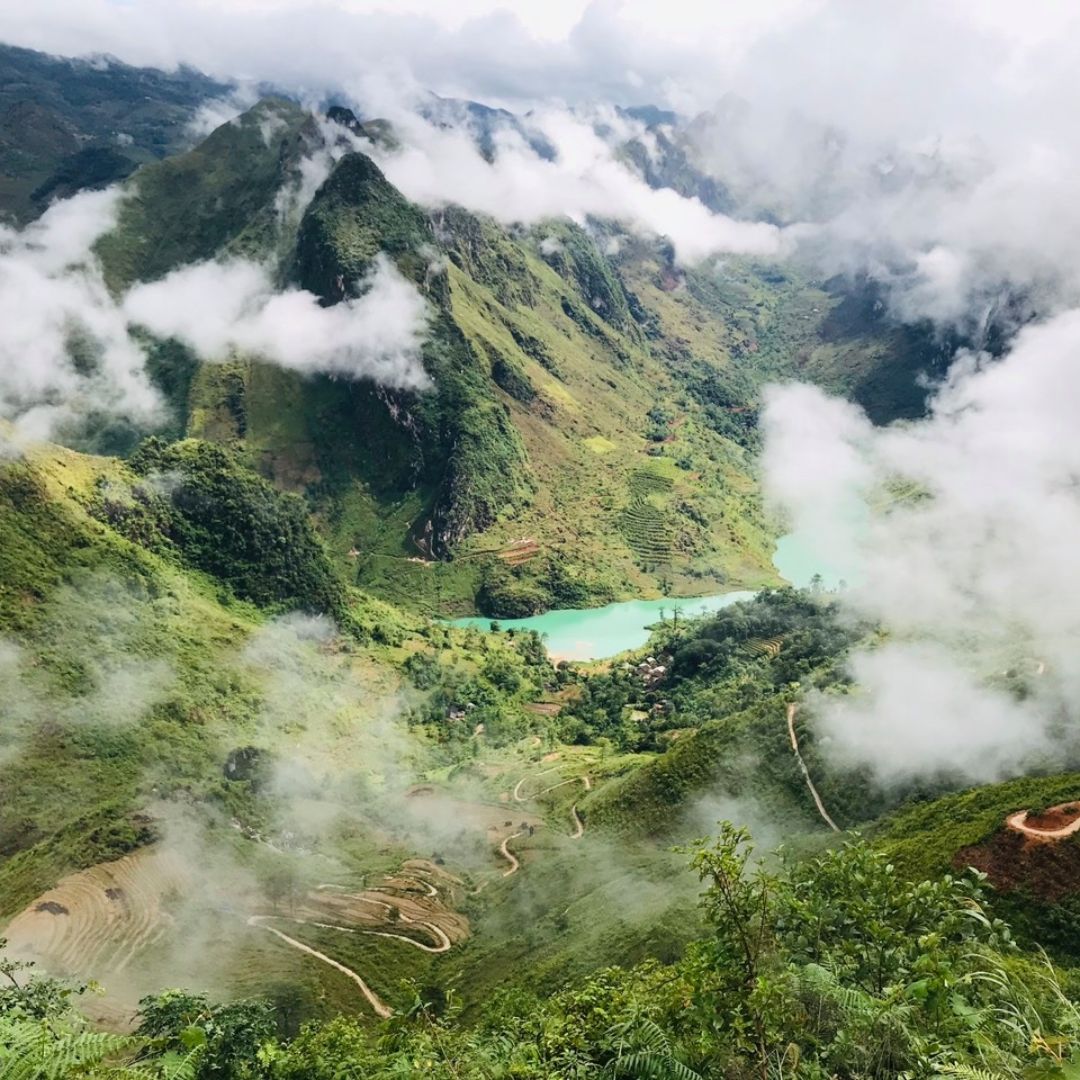
Nestled in the far north of Vietnam, the Ha Giang Loop is a treasure trove of stunning landscapes, winding mountain roads, and vibrant cultural experiences. As you embark on this journey, you’ll be greeted by towering limestone peaks, lush green valleys, and terraced rice fields that stretch as far as the eye can see. The beauty of Ha Giang is unparalleled, offering a raw and untouched charm that is becoming increasingly rare in our modern world.
The Ha Giang Loop is a 350-kilometer route that weaves through some of the most remote and picturesque regions of northern Vietnam. This adventure promises not just visual delights but also a profound connection with nature, as you ride through serene landscapes that change dramatically with each turn. From the breathtaking Ma Pi Leng Pass to the tranquil Dong Van Karst Plateau Geopark, every kilometer of the Ha Giang Loop offers a new and awe-inspiring view.
Highlight of Ha Giang Loop
|
Ma Pi Leng Pass |
breathtaking views of deep valleys, towering limestone cliffs, and the winding Nho Que River below |
|
Dong Van Karst Plateau Geopark |
A UNESCO Global Geopark, home to a rich diversity of flora and fauna and offers an insight into the geological history of the region |
|
Dong Van Old Town |
well-preserved architecture and vibrant weekend market |
|
Lung Cu Flag Tower |
a symbol of national pride, panoramic views of the surrounding countryside and a sense of achievement for reaching this significant landmark |
|
Quan Ba Heaven Gate |
scenic viewpoint offers a magnificent panorama of the Twin Mountains (Fairy Bosom) and the lush valleys below |
|
Tham Ma Pass |
known for its steep and challenging roads, making it a thrilling ride for motorbike enthusiasts |
| Du Gia Village | a serene and less-visited destination, excellent place for an overnight stay in a homestay |
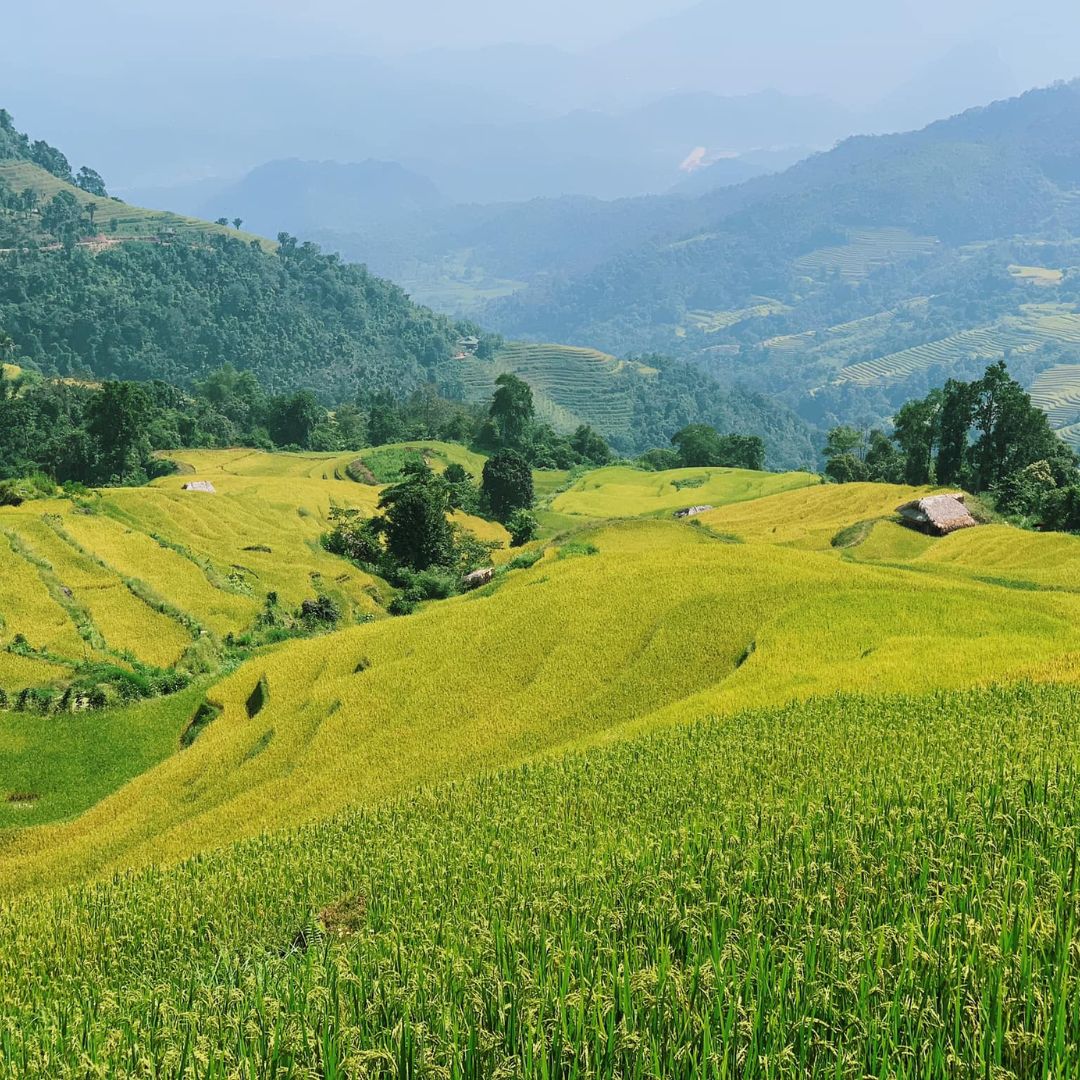
The Ha Giang Loop is not for the faint-hearted. It presents a series of challenges that make the journey all the more rewarding. The road conditions vary from smooth tarmac to rugged, unpaved paths, demanding a certain level of skill and concentration. However, the thrill of navigating these roads, coupled with the adrenaline rush of conquering the loop on a motorbike, is an experience like no other.
Riding the Ha Giang Loop is an adventure that pushes you out of your comfort zone and rewards you with a sense of accomplishment. The steep inclines, hairpin bends, and unpredictable weather conditions add to the excitement, making each day’s ride a new adventure. For those who seek a true adventure, the Ha Giang Loop offers an exhilarating ride through some of Vietnam’s most challenging terrains.
Discovering the Unique Cultures and Traditions Along the Ha Giang Loop
One of the most enriching aspects of the Ha Giang Loop is the opportunity to immerse yourself in the unique cultures and traditions of the local ethnic minorities. The region is home to several ethnic groups, including the Hmong, Tay, and Dao people, each with their own distinct customs, attire, and way of life.
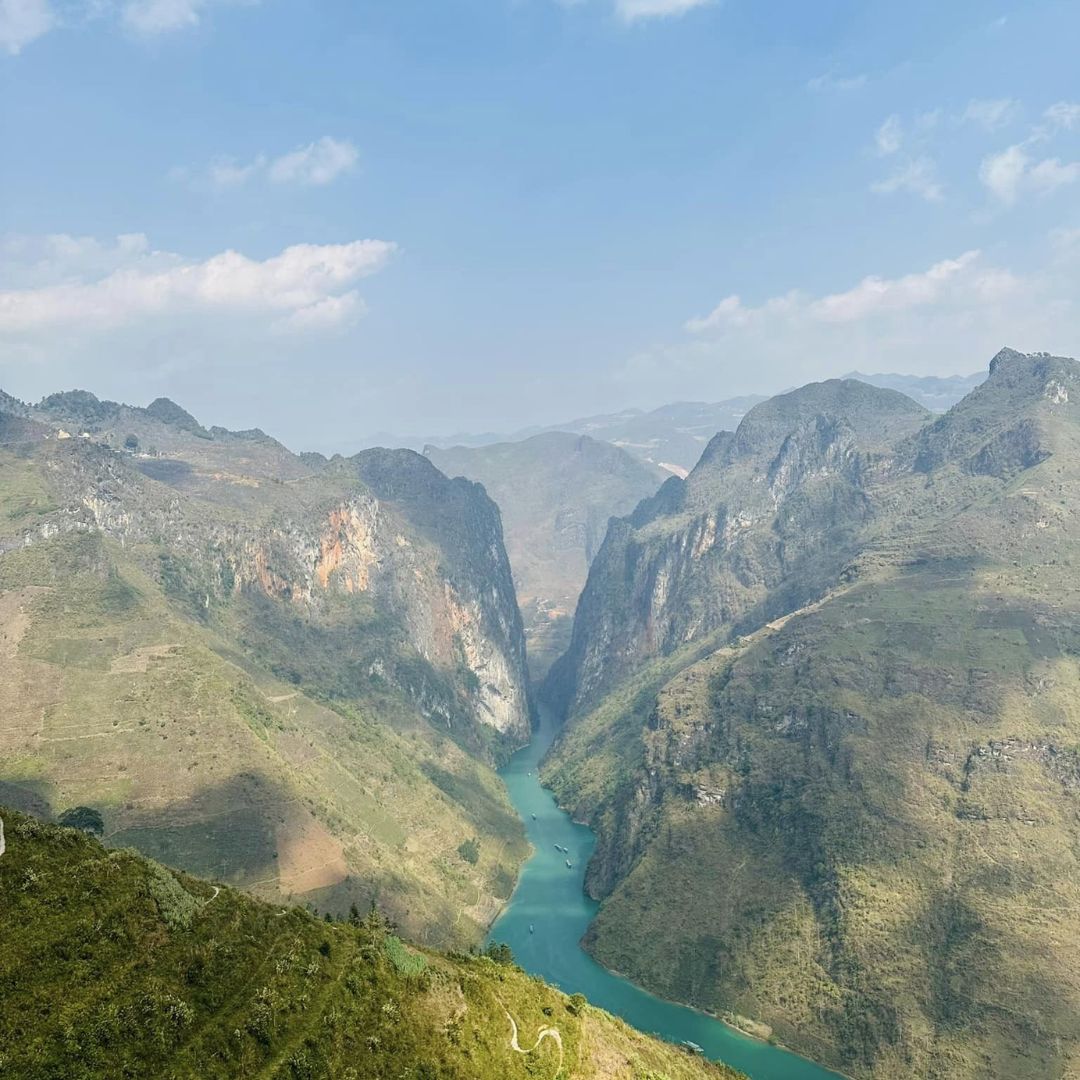
As you travel through the loop, you’ll have the chance to visit traditional villages, interact with local communities, and experience their hospitality firsthand. Staying in a homestay with a local family is a highlight of the journey, offering a deeper understanding of their daily lives and cultural heritage. From colorful markets to traditional festivals, the cultural encounters along the Ha Giang Loop add a rich and rewarding dimension to the adventure.
Traditional Hmong Markets
One of the most vibrant cultural experiences on the Ha Giang Loop is visiting the local markets, where ethnic minority communities gather to trade goods and socialize. Markets such as the Dong Van Sunday Market and the Meo Vac Sunday Market are bustling with activity, showcasing a colorful array of traditional clothing, handmade crafts, and local produce. These markets are not only a place for commerce but also serve as important social gatherings for the local people.
Homestays with Ethnic Minority Families
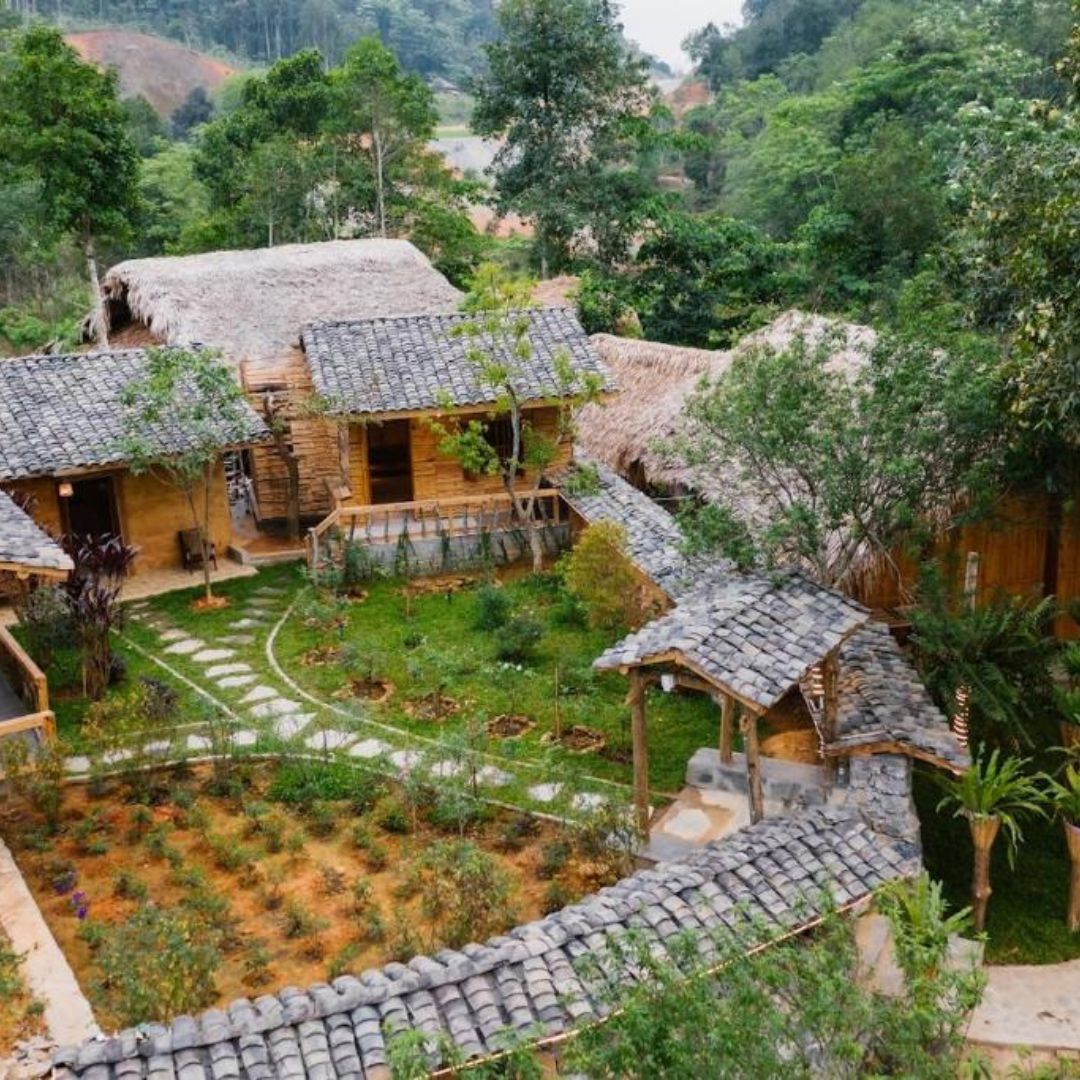
Staying in a homestay with a local family is an immersive way to experience the unique cultures of Ha Giang. For instance, in Du Gia Village, visitors can stay with a Tay family, experiencing their daily routines, traditional meals, and hospitality. Participating in cooking traditional dishes, such as “thang co” (a traditional Hmong dish), provides insight into their culinary practices and social customs.
Ethnic Festivals and Celebrations
If you time your visit right, you might witness traditional festivals that offer a deeper understanding of local customs and beliefs. The “Gau Tao” festival, celebrated by the Hmong people, is a New Year celebration featuring traditional music, dance, and rituals intended to bring good luck for the coming year. Another significant event is the “Love Market” in Khau Vai, where people from various ethnic groups gather to meet old friends and potential partners in a unique cultural courtship tradition.
Visiting Traditional Villages
Exploring villages like Pho Cao and Sung La offers a glimpse into the architectural styles and way of life of the ethnic minorities. These villages are known for their traditional houses made of clay and stone, with intricate designs that reflect the cultural identity of the residents. Walking through these villages, you can observe traditional weaving practices and other artisanal crafts that have been passed down through generations.
Cultural Insights through Local Guides
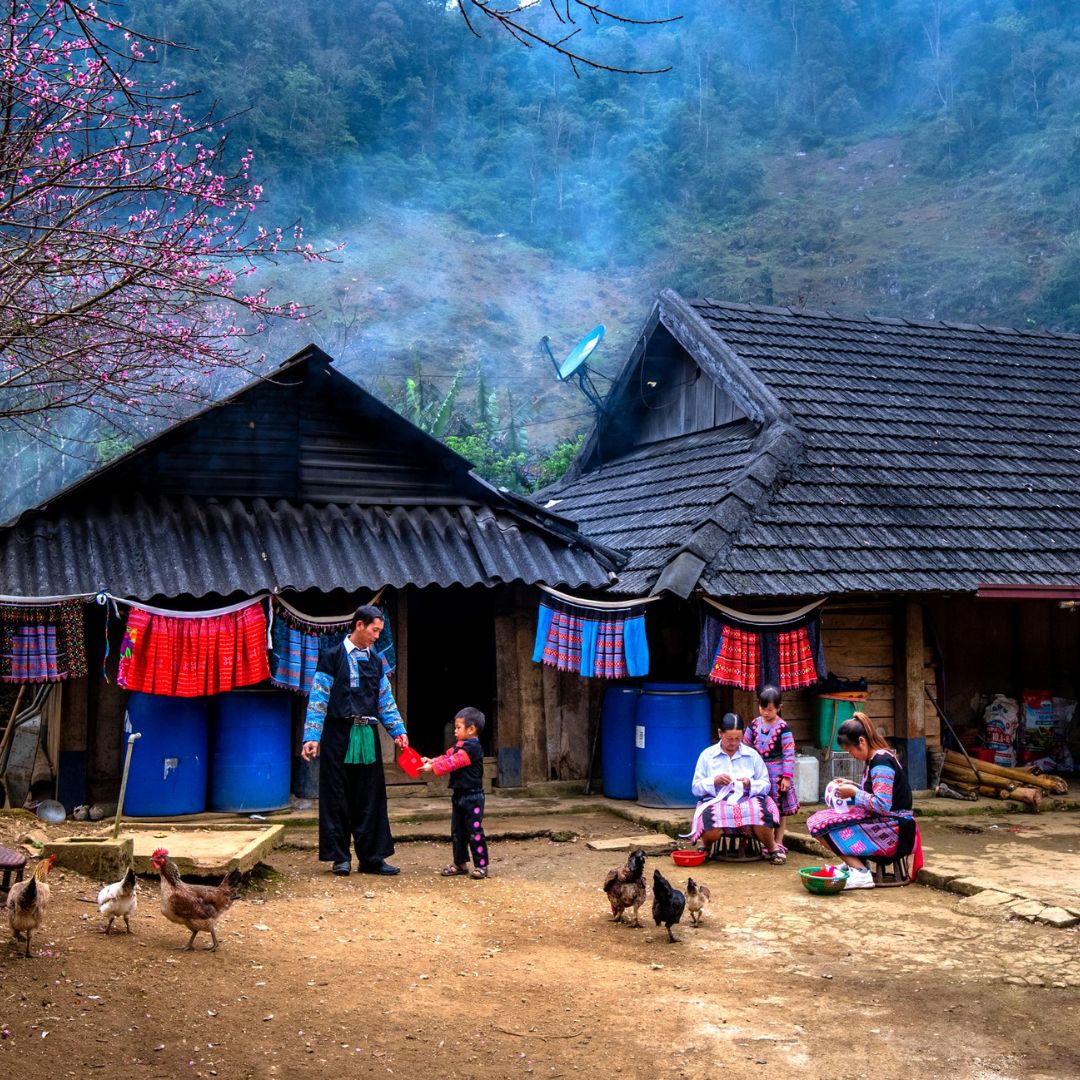
Hiring a local guide can significantly enhance your understanding of the region’s cultural diversity. For example, guides from the Hmong, Tay, or Dao communities can share stories and explanations about their customs, rituals, and history. This firsthand knowledge helps bridge the gap between visitors and the local culture, making the experience more meaningful and educational.
Local Music and Dance
Traditional music and dance are integral parts of the cultural expression in Ha Giang. Instruments like the “khen” (a type of bamboo mouth organ) are often played during cultural performances and festivals. Witnessing or participating in these musical traditions offers a deeper appreciation of the artistic heritage of the ethnic minorities.
Why the Ha Giang Loop Should Be on Every Adventurer’s Bucket List
The Ha Giang Loop is a must-see for every adventurer and travel enthusiast. The loop is dotted with numerous highlights and top attractions that showcase the natural and cultural richness of the region. Key stops include the mesmerizing Ma Pi Leng Pass, the historic Dong Van Old Town, and the vibrant Lung Cu Flag Tower, which marks the northernmost point of Vietnam.
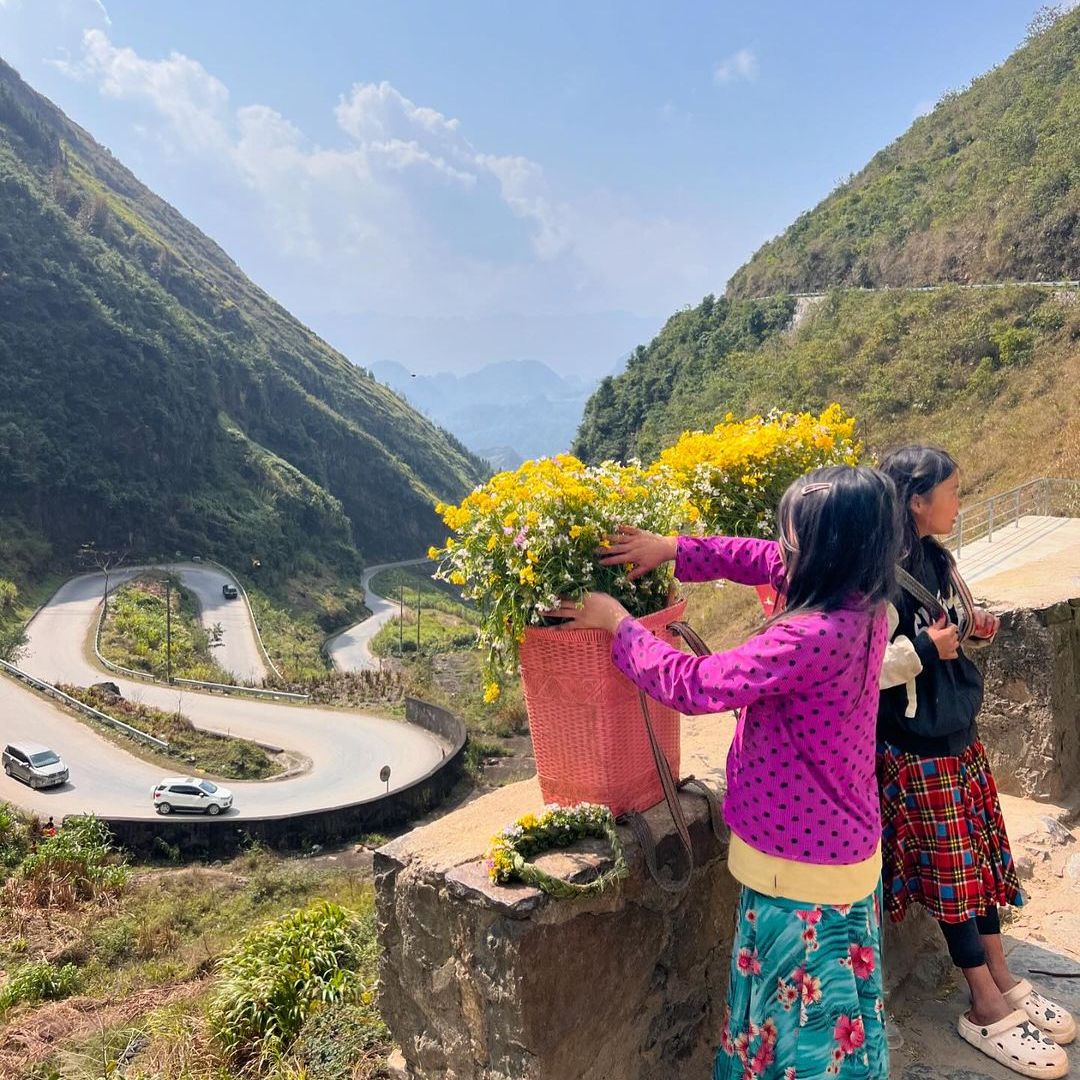
An ideal itinerary for the Ha Giang Loop includes these must-see spots, along with ample time for spontaneous stops to capture the stunning scenery and interact with locals. The loop is also a photographer’s paradise, offering countless opportunities to capture the raw beauty of northern Vietnam. Whether it’s the golden hues of the terraced fields at sunrise or the mist-covered mountains at dusk, every moment on the Ha Giang Loop is picture-perfect.
Suggested itinerary 3D4N Ha Giang Loop
DAY 1: Ha Giang City – Quan Ba – Yen Minh – Dong Van Town (135km)
8:00 am: Start your day.
8:30 am: Prepare for motorbike and attach backpack on the bike.
- Bac Son Pass: Begin your journey with a drive over the Bac Son Pass, where you’ll be treated to sweeping views of lush valleys.
- Quan Ba Heaven Gate: Stop at this iconic viewpoint to admire the panoramic vistas of the towering mountains and deep valleys below.
- Quan Ba Twin Mountain: Visit these uniquely shaped hills, surrounded by vibrant landscapes and steeped in local legend.
- Can Ty Pass: Navigate the winding roads of this pass, offering thrilling rides and breathtaking scenery.
- Yen Minh Town: Pause for a delightful lunch and experience the local cuisine.
- Tham Ma Pass: Continue your adventure through this spectacular pass, showcasing the impressive topography of Ha Giang.
- Hmong King’s Palace: Explore this historical site to gain insight into the life of the Hmong leaders.
- Dong Van Town: Check into your hotel and take a moment to relax.
7:00 – 7:30 pm: Enjoy dinner as the sun sets over the mountains, then explore the charming Dong Van Ancient Town.
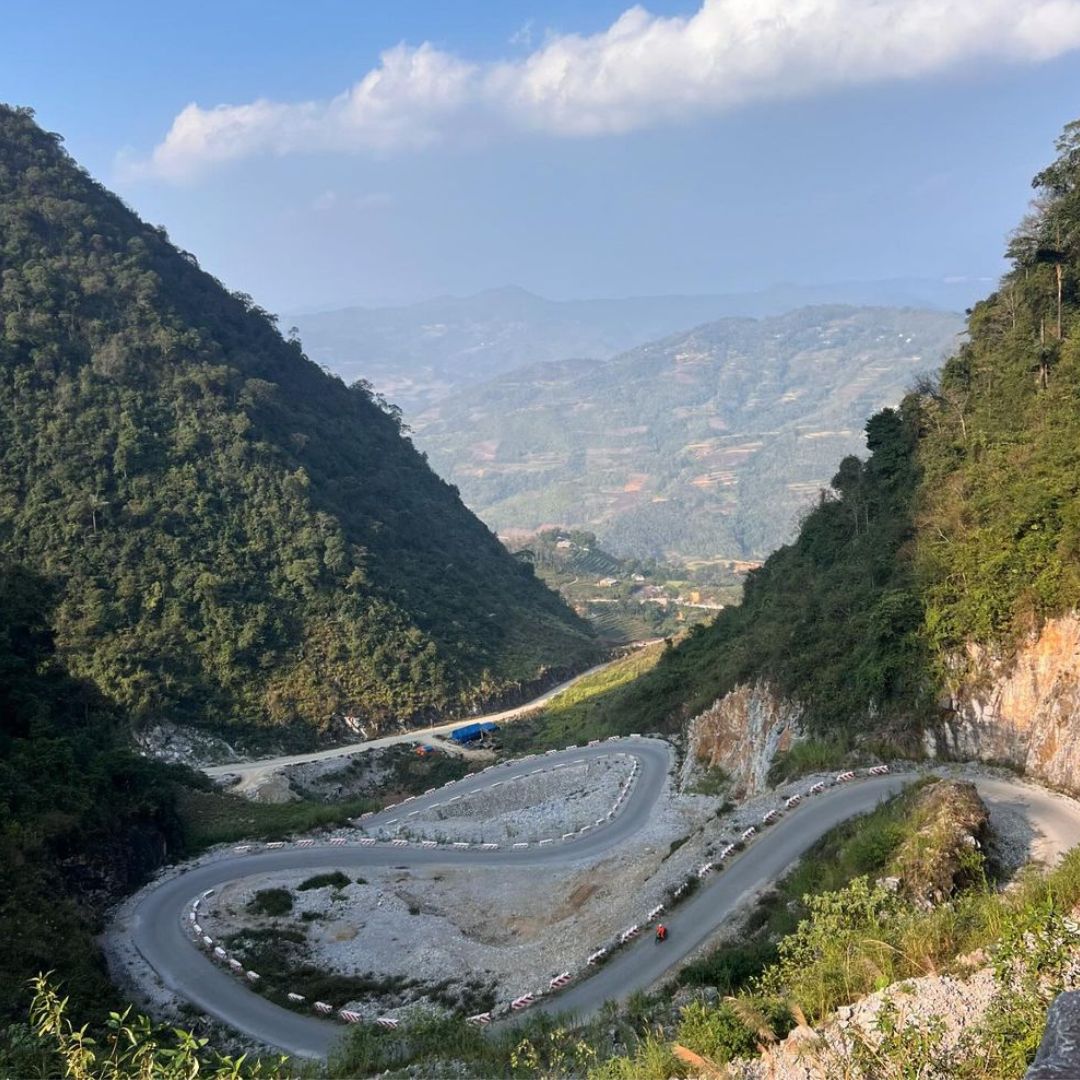
DAY 2: Dong Van Town – Ma Pi Leng Pass – Meo Vac – Du Gia Village (110km)
8:00 am: Breakfast in Dong Van Town, with an optional visit to the vibrant Dong Van Sunday Market if your visit coincides with the weekend.
- Ma Pi Leng Pass: Embark on a journey through one of Vietnam’s most stunning passes, known for its dramatic landscapes.
- Nho Que River: Take a boat trip on the turquoise waters, surrounded by towering cliffs and lush scenery.
- Meo Vac or Mau Due Village: Stop for lunch in one of these villages, sampling traditional dishes and soaking in the local culture.
- Sa Li Pass and Lung Ho Viewpoint: Continue your ride, taking in the stunning views and unique experiences at each stop.
- Du Gia Village: Arrive in this serene village and visit the refreshing Du Gia Waterfall.
7:00 – 7:30 pm: Check into a homestay run by the Tay ethnic group, and enjoy a home-cooked dinner, experiencing the warm hospitality of your hosts.
DAY 3: Du Gia Village – Lung Tam Village – Ha Giang City (105km)
8:00 am: Begin your day with breakfast at your homestay. If it’s Sunday, don’t miss the lively Du Gia Market.
- Duong Thuong Viewpoint: Travel through breathtaking landscapes to this scenic viewpoint.
- Lung Tam Village: Discover the traditional hemp weaving techniques of the Hmong women, passed down through generations.
- Tam Son Town: Stop for lunch and enjoy more local cuisine before the final leg of your journey.
3:30 pm: Conclude your memorable trip.
>>> How to Get from Hanoi to Ha Giang
Best Time to Do Ha Giang Loop
To make the most of this adventure, it’s crucial to choose the right time to visit. Here are the best times to embark on the Ha Giang Loop, considering weather, scenery, and local events:
Spring (March to May)
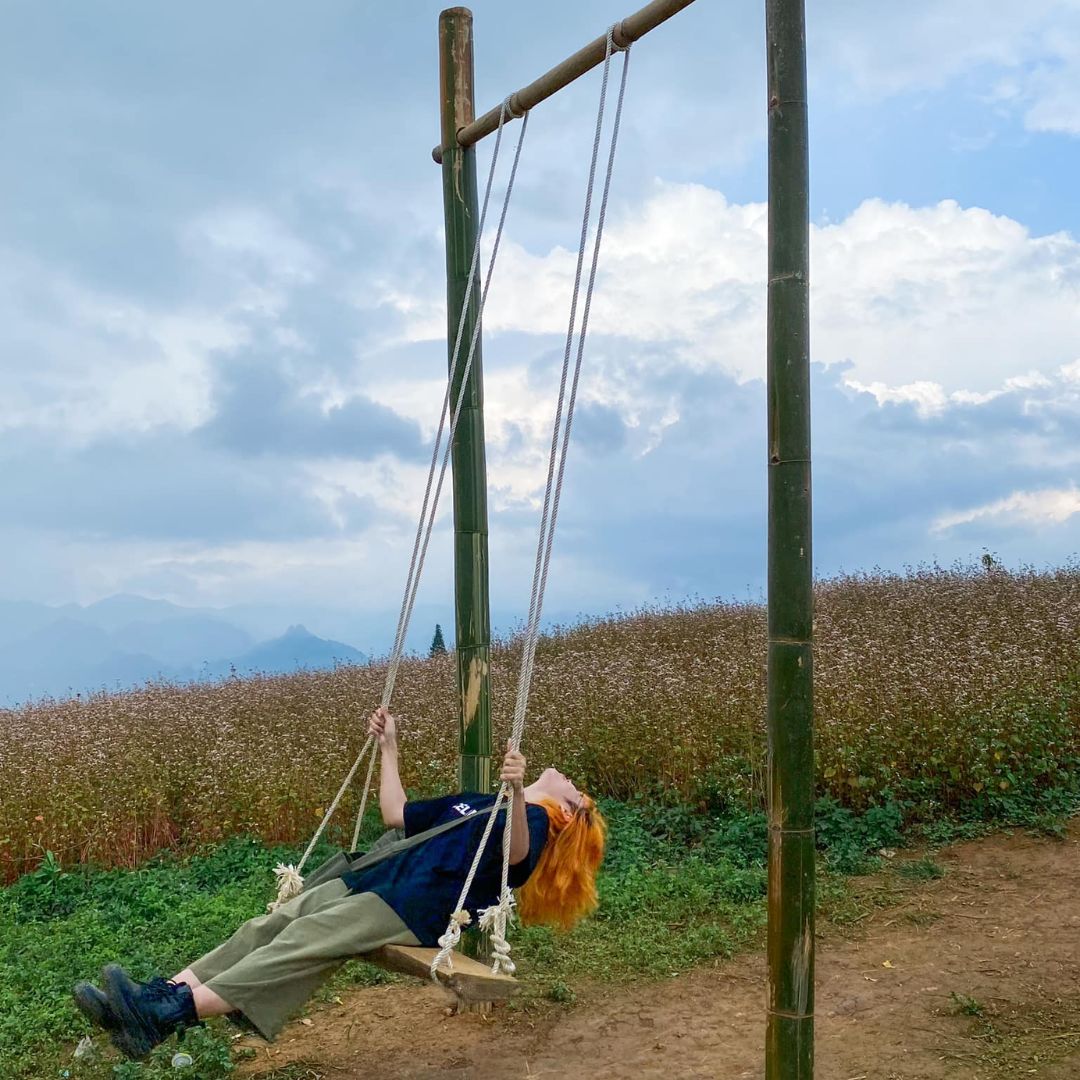
Spring brings mild temperatures and pleasant weather, with daytime highs ranging from 15°C to 25°C (59°F to 77°F).
This season is known for its lush green landscapes and blooming flowers. The terraced rice fields and valleys are at their verdant best, making it an ideal time for photography.
The weather is perfect for riding, and you’ll encounter fewer tourists compared to the peak summer months. Spring is also a great time to experience local festivals and cultural events, offering a richer cultural experience.
Autumn (September to November)

Autumn is considered the best time to visit the Ha Giang Loop, with comfortable temperatures ranging from 18°C to 28°C (64°F to 82°F).
The autumn months are famous for the golden rice terraces, especially in late September and early October when the fields are ready for harvest. The clear skies and crisp air provide excellent visibility and stunning views.
This season offers the most spectacular scenery, making it a favorite among photographers and nature lovers. Additionally, the dry weather ensures safer and more enjoyable riding conditions.
Summer (June to August)
Summer is characterized by warm temperatures, averaging between 24°C and 35°C (75°F to 95°F). However, this season also brings frequent rainfall and occasional heavy downpours.
The landscapes remain lush and green, but the frequent rains can lead to slippery roads and potential landslides, making riding more challenging.
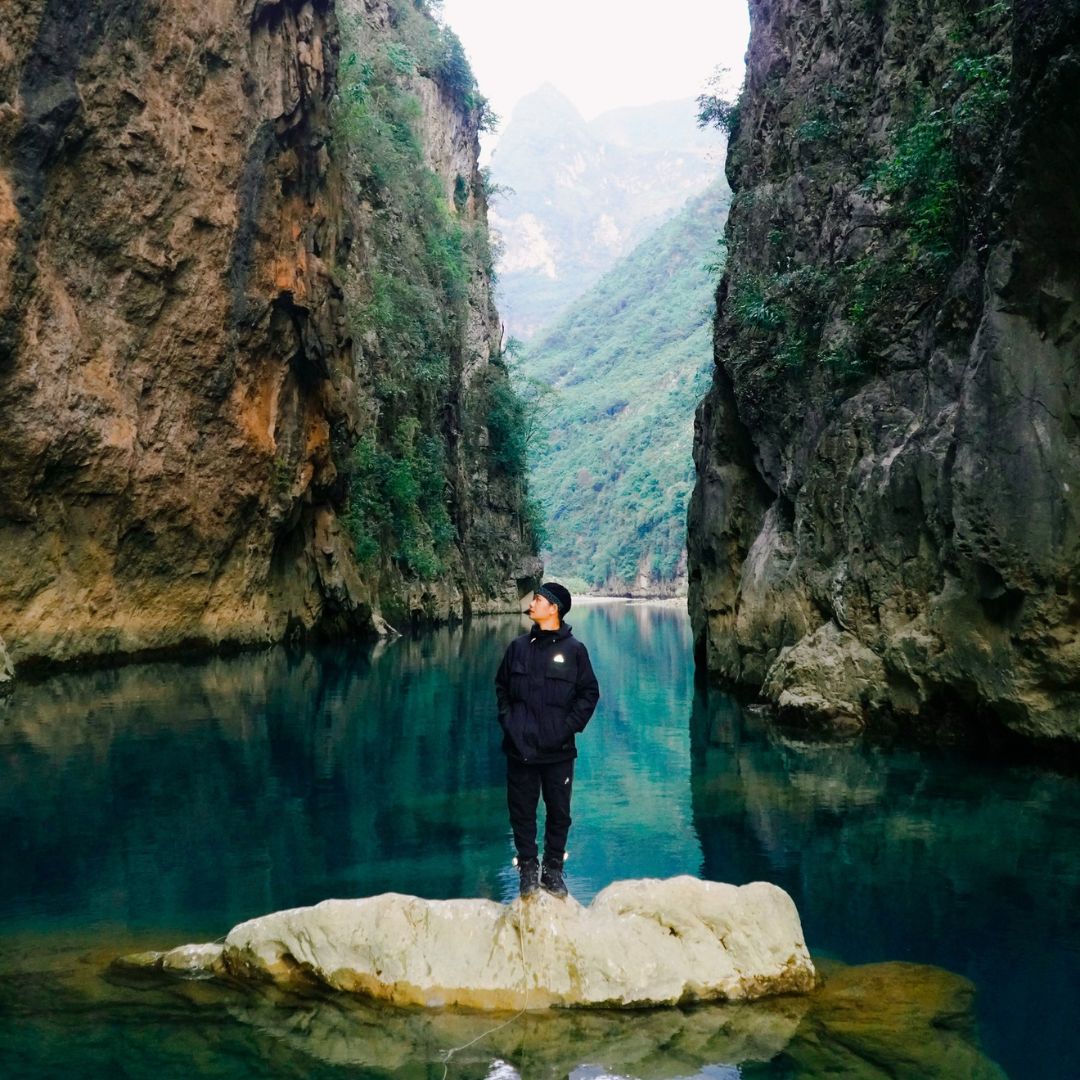
Despite the rain, summer is a vibrant time in Ha Giang, with various agricultural activities and festivals. If you don’t mind the occasional shower and prefer a quieter experience with fewer tourists, summer can be a good option.
Winter (December to February)
Winter in Ha Giang is cold, with temperatures ranging from 5°C to 15°C (41°F to 59°F). In higher altitudes, temperatures can drop below freezing, especially at night.
The landscape takes on a different charm in winter, with mist-covered mountains and a serene atmosphere. However, the cold weather can make riding less comfortable.
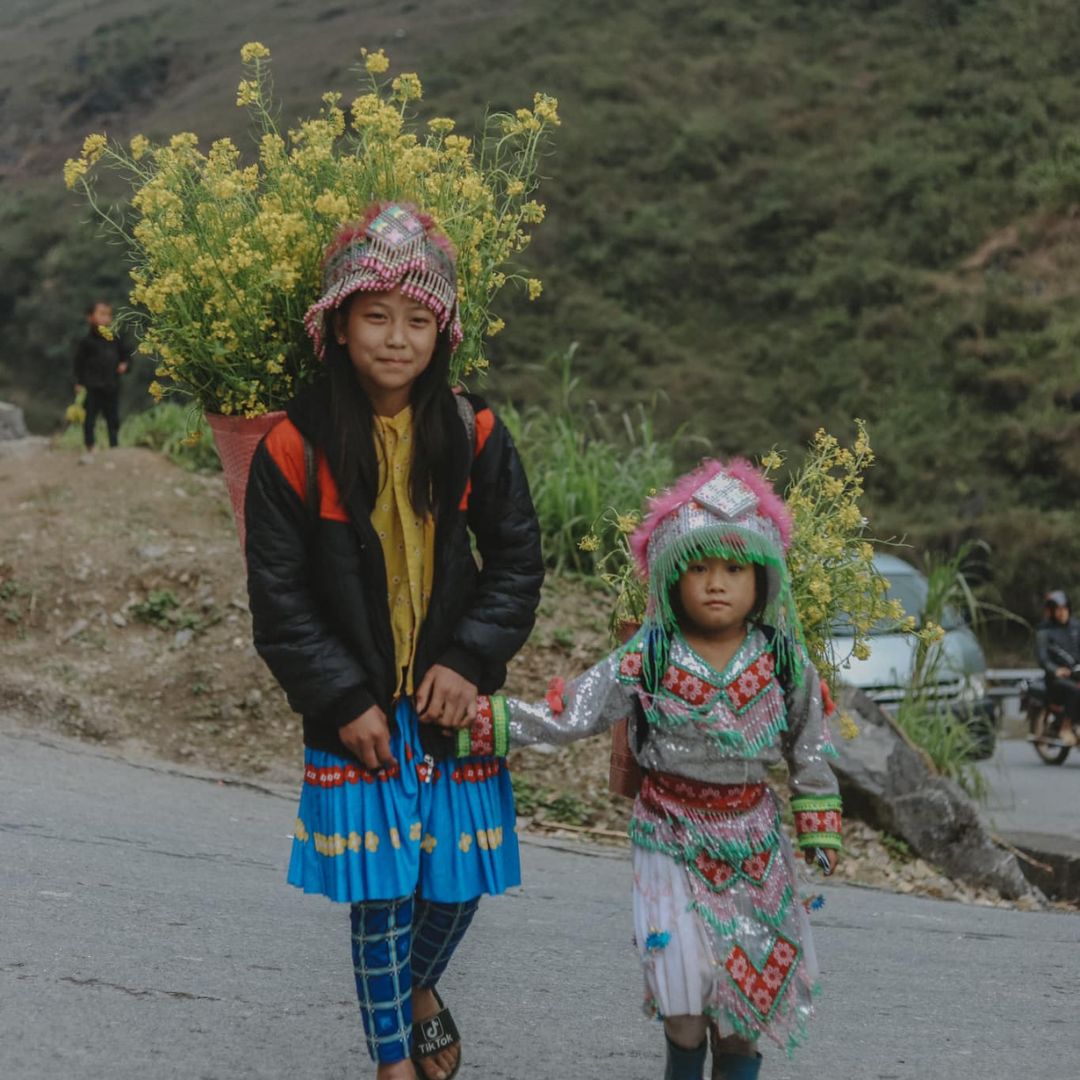
Winter is the least crowded time to visit, providing a peaceful and solitary experience. If you’re well-prepared for the cold and enjoy tranquil landscapes, winter offers a unique perspective on the Ha Giang Loop.
Practical Tips for Planning and Conquering the Legendary Ha Giang Loop
To make the most of your Ha Giang Loop adventure, a bit of planning goes a long way. Here are some practical tips to ensure a smooth and memorable journey:
- Guide and Maps: Familiarize yourself with the route and key landmarks. Having a reliable map or GPS is essential.
- Motorbike and Gear: Ensure your motorbike is in good condition and equipped with essential gear like a helmet, gloves, and protective clothing.
- Accommodation: Plan your stops and book homestays in advance, especially during peak seasons.
- Budget: The Ha Giang Loop is budget-friendly, but it’s wise to carry extra cash as ATMs are scarce in remote areas.
- Weather and Safety: Check the weather forecast and be prepared for sudden changes. Safety should always be a priority, so ride cautiously and be aware of road conditions.
Is the Ha Giang Loop Worth It FAQs
[WPSM_AC id=39]Conclusion
Is the Ha Giang Loop worth it? Of course, it is a journey that promises not just breathtaking landscapes but also a profound sense of adventure and cultural immersion. It’s a challenge worth undertaking, offering rewards that far outweigh the effort. Whether you’re a seasoned traveler or a first-time visitor to Vietnam, the Ha Giang Loop is an unforgettable experience that will leave you with lasting memories and a deep appreciation for the beauty and diversity of northern Vietnam.

